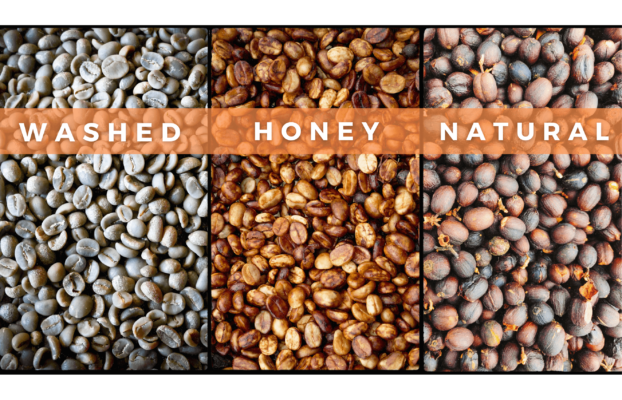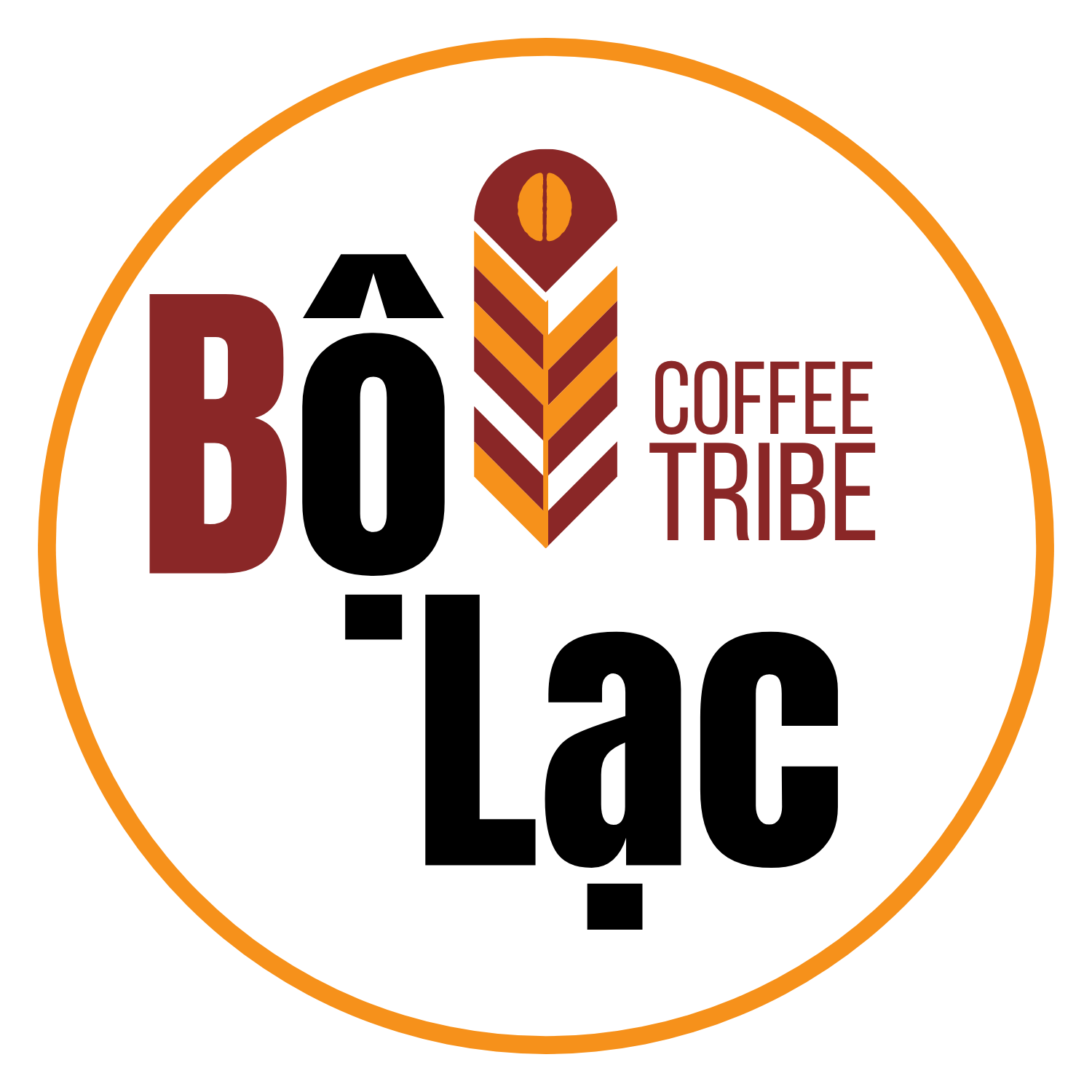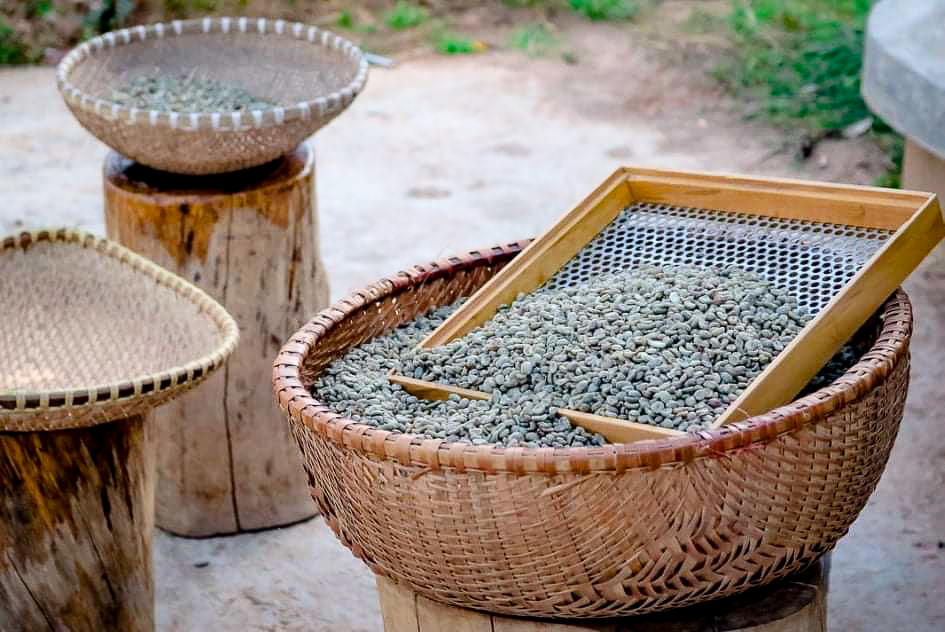Coffee processing dates back to the 15th century and has evolved ever since. Today, coffee production is a major source of income for more than 12 million households around the globe, most of them in developing countries. Our journey starts here in Vietnam where we source all our relationship coffees in direct trade with the farmers and producers and we are not afraid to get our hands dirty in the process, too. During the harvest season we have spent time in the mountains and learned about coffee & people and we’re looking forward to be back as soon as we can. Coffee processing means: converting the raw coffee fruit of the coffee tree into dried green coffee, ready to roast.
Here are the Three Main Processing Methods, found in Coffee Production Today:
The Coffee Plant:
The big question: “where did coffee originate from” is one of legends and folklore. The most commonly told story is that of the coffee forests on the Ethiopian plateau in Eastern Africa, where a goat herder ate the berries from a tree which his goats seemed to have a ‘wild passion’ for. The berries energized him and gave him a feeling that he had never experienced before. Another theory suggests that the cradle of coffee is in South Sudan, where coffee seemed to be cultivated and processed even earlier. Coffee trees are found around the world on the so called “Bean Belt” which describes tropical regions around the Equator in Central & South America, the Middle East, Africa and Asia.
The coffee seed itself grows inside a cherry, the so called ‘pulp’ which is removed in two out of the three methods we are talking about today, leaving the bare seed or more commonly called ‘bean’, which is then spread out to dry. While all green coffee is processed, the method that is used varies and has a significant effect on the flavour of roasted, and later on brewed coffee. (The term “green coffee” stands for the raw, unroasted coffee beans)

Let’s dive into the world of Coffee Processing together.
1. Washed Coffee
Washed coffees focus on the pure quality of the plant variety and its fruit, the coffee bean. This way of processing lets you experience the pure origin flavour and show you “what’s on the inside, rather than the outside.” They highlight the quality or reveal the potential flaws of a coffee.
Often described as a clean and crisp cup, washed coffees are popular because they bare less risk for the producer as they are easier to dry and are less likely to catch mold in case of unexpected rainfalls and increase of moisture in the air.
Very important for a good and tasty washed coffee is that the bean has absorbed enough natural sugars and nutrients during its growing cycle on the tree. This means the varietal, soil and weather condition, ripeness, fermentation-process, the washing method AND careful drying are the key to success and make a really flavourful washed coffee, done right.
Our Langbiang Washed Arabica in the ‘Langbiang Flavour Trio’ is processed with a Kenya-Style Double Fermentation: The Beans will be put in air-tight tanks for two rounds of controlled fermentation to break down the mucilage, which is a sticky layer of natural sugars covering the seeds surface. Many so called ‘wet mills’ simply wash the mucilage off in a stream of water which is possible but uses a lot of water. The method of our partner’s processing station ‘Zanya Coffee’ in Langbiang is less water consuming and adds an extra clean, lemon-like citrus and red-fruit note to the coffee.
 (Cherry is being stripped off the seed and sepperated before drying – “depulping”)
(Cherry is being stripped off the seed and sepperated before drying – “depulping”)
2. Honey / Pulped Natural Coffee
To avoid misunderstandings: A Honey processed coffee does NOT involve any bee-honey at any time. Though, done right, honey processed coffee can taste so lovely and sweet like someone has put a little honey or brown sugar in your cup of coffee. The term ‘honey’ actually comes from the beans sticky surface during processing. This type of coffee is halfway between a washed coffee and a natural processed coffee. It is fruity, but not as winey as some naturals taste and especially smell. It often has a more rounded acidity than washed coffees, with more intense sweetness and complex mouthfeel.
The honey process is subcategorized into: white, yellow, red, and black honey. This describes the level of mucilage (sticky layer of natural sugars on the seed) that is left on the seeds surface after removing the cherry and giving it a lighter or darker shade of red. The more mucilage left on the bean, the sweeter the taste can be.
Our Red Honey Arabica processed by Zanya Coffee in Langbiang is one of a kind. Instead of being washed, it is floated in a water bath, which is unusual for honeys. That way, any ‘floaters’ can be scooped-off, which are beans that are less dense or defected. Sorting them out leaves us with clean and 100% ripe seeds for a really great quality coffee. About 70-80% of mucilage remains on the seed in this processing method.
The result of Red Honey Processing is a fruitier and sweeter cup. The acidity often is more balanced and less citric compared to a washed coffee. We often find dried blackberry notes in our roasts of the Langbiang Red Honey.
 (Our Red Honey Arabica from Langbiang and Washed Arabica in the background.)
(Our Red Honey Arabica from Langbiang and Washed Arabica in the background.)
3. Natural / Dry Processed Coffee
The natural process, also known as dry process, originated from the Highlands of Ethiopia and is the oldest of processing methods. The fruit remains on the bean after harvesting and is put to dry on raised beds. Although it requires less time and effort at first, it needs stable weather conditions without rainfalls to ensure the even drying of the fruit and its bean on the inside.
The natural process has fallen out of favour for a long time as it was considered a lower-quality method that can lead to flavour inconsistency. However, there are many who believe this process actually has the potential to create the most flavourful cups of coffee. If processed with great care and love for the detail, ‘Naturals’ can provide a clean cup and very fruity and aromatic notes at the same time.
Our Partners at Culture Bean in Langbiang / Dalat have processed a wonderful Natural Arabica which has exactly what we were looking for. Clarity in the cup embracing the origin flavour, and adding a ton of sweet red fruit and warm flavour-notes. In case you have tried winey gummy bears before, think about them the next time you take the aroma from your freshly opened bag.
 (Coffee cherries after picking)
(Coffee cherries after picking)
AVAILABLE NOW – SPECIAL EDITION
‘The Langbiang Experience Trio’ gathers the three main types of processing found in the world of coffee today. Tasting them side by side will help you to understand its impact on your cup of coffee. You may find your preference in one of them or simply enjoy the different characteristics and nuances between the Natural, Honey & Washed Arabica from the Langbiang terroir. Let’s dive a little deeper into the world of flavour together.
Three Methods, Two Producers – One Origin.
click here to get yours today!

Follow us on Facebook and be the first to see news from Your favourite Coffee Tribe – click!

